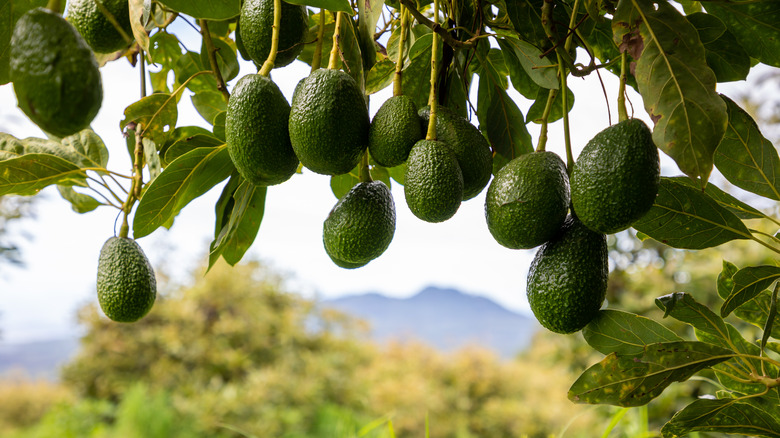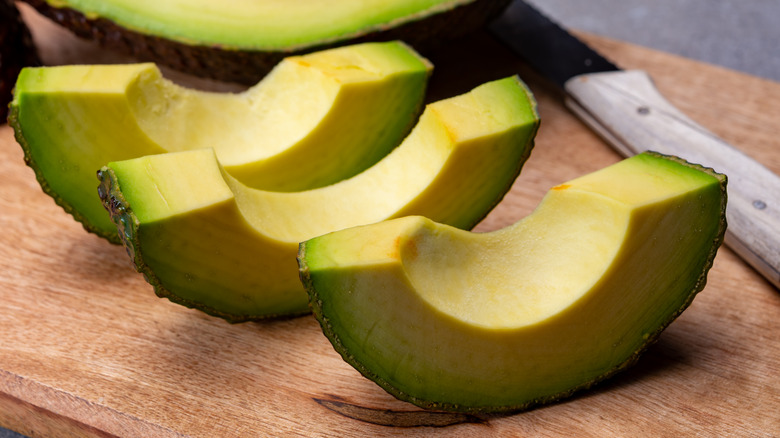Is It Safe To Eat Brown Avocado?
Avocados have become a staple for many dinner, lunch, and breakfast tables, thanks to their health qualities, wonderfully mild taste, ease of preparation, and more than one social media trend or viral celebrity validation. Nearly as hyped as sliced bread, sliced avocados and guacamole can be found on virtually every brunch menu, and homemade avocado toast is about as basic as breakfast could ever be.
But what if in the time it takes you to grab the ring light, the avocado on your toast turns brown: Is brown avocado still safe to eat? Although it may not be as appetizing as before, brown avocados are absolutely fine to eat and still retain their healthy qualities. Avocado flesh, like the flesh of bananas or apples, will react to the oxygen in the air and begin to turn brown as chemical compounds oxidize (per Scientific American).
According to The Kitchn, the longer avocado flesh is exposed to oxygen in the air, the more melanin the flesh will produce, resulting in a brown color. As said, brown avocado is still safe to eat, so long as you keep in mind how long the avocado has had a chance to oxidize.
If the discoloration is severe and the result, for instance, from the avocado being left out for days, then maybe it's time to throw it away. However, it's best to just trust your gut. To prevent the browning effect, just squeeze some lemon juice over your avocados; this will stop the oxidation process and can also be done for bananas and apples.
How to tell if your brown avocado is actually rotten
Typically, associating browning foods with rotten foods is appropriate and the smart thing to do, but sometimes it can be a bit harder to tell whether it's oxidation or over ripeness that's afflicting your avocado. With this said, if you're the one who prepared or ordered it, you should be able to tell if the avocado in front of you is brown because of oxidation or not (and for how long it's been oxidizing). As Insider says, it is perfectly safe to eat brown avocado that you know is only brown because it's been exposed to air for a short period of time.
As for brown avocado on the outside, that also isn't necessarily a bad sign. According to Foodiosity, a healthy avocado should strike a balance of color and texture. The site suggests not only checking for extreme discoloration once you slice an avocado open, but also checking the darkness of the avocado's skin and the firmness of the fruit's flesh.
Healthline agrees, explaining that as avocados ripen, their color will turn darker, to a dark green or brown. An avocado that looks closer to black in color, however, is too far gone and will most likely also feel mushy to the touch: both telltale signs the avocado has spoiled and is no longer safe to eat. Further, the outlet warns against both black or brown spots found throughout avocado flesh but notes that a single brown spot or two may be the result of bruising, just like an apple, and can be cut away.

